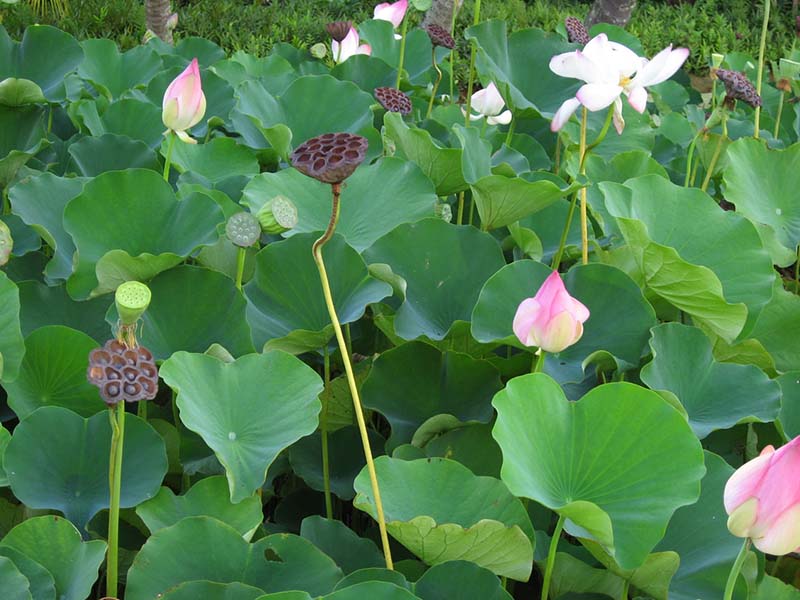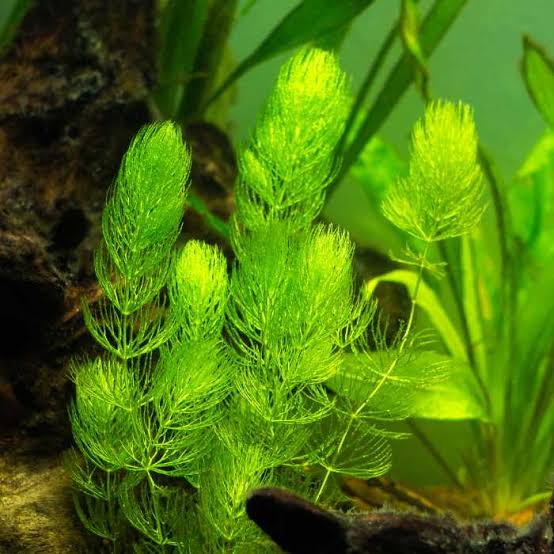Nutrient Filtration by Aquatic Vegetation
Aquatic plants play a vital role in maintaining the health of pond ecosystems. Through a symbiotic relationship with naturally occurring bacteria, these plants absorb and metabolise nutrients from fish waste and decaying organic matter while also taking carbon dioxide. In the process, they release oxygen into the water, contributing to the overall oxygenation and vitality of the pond.
Effective Plants for Pond Water Purification
Surface-Dwelling Plants
Surface-dwelling plants, with their floating grace, provide more than just an enchanting aesthetic. They act as natural water purifiers by soaking nutrients and diminishing sunlight penetration, discouraging algae from thriving. These plants offer shade, which keeps the water temperate and provides shelter for aquatic fauna.
Optimal Surface-Dwelling Plants That Purify Water:
- Caution: Water Hyacinth, though effective, is considered invasive in several regions.
- Water Lettuce
- Duckweed
- Fairy Moss
- Floating Fern



Image source: https://weeds.dpi.nsw.gov.au/
Border Plants
Border plants, or emergent vegetation, establish themselves below the waterline yet exhibit leaves and blossoms above it. As water flows through their expansive root networks, these plants filter out nutrients and nitrates essential for algae proliferation. They are ideal for planting along the pond’s periphery or in shallow containers.
Top Border Plants for Nutrient Absorption:
- Water Celery
- Water Iris (select non-invasive species)
- Pickerelweed
- Taro
- Canna
- Lilies
- Lotus
- Watercress (suitable for flowing water areas)



Image source : https://stories.rbge.org.uk/ , https://ntbg.org/database/plants/detail/nelumbo-nucifera
Submerged Flora
The often overlooked submerged flora significantly oxygenate the water while absorbing nutrients through their foliage. Rooted within the pond’s bed, they exist mainly below the surface, creating an unseen but valuable purifying effect.
Superior Submerged Species for Clean Water:
- Anacharis
- Hornwort
- Fanwort



Image source : aquariumbreeder.com,aquiflor.com,a-zaquatic.com
Man-Made Pond Filters Versus Natural Plant Filtration
While mechanical filters can extract particulate matter from water, natural plant filtration offers a multifaceted approach to maintaining water clarity. Using a selection of pond plants hones in on the natural ecosystem’s ability to regulate itself, manage nutrient levels and deter algal expansion. This harmonious combination of aesthetics and functionality underlines aquatic plants’ significant role in sustaining a healthy and balanced pond environment.
Considering each plant’s unique adaptability to water depth, light availability, and climate, one can curate a pond that flourishes in beauty and efficiency. Balancing the plant species and their growth rates is crucial to prevent any one type from becoming overly dominant, especially considering the invasive potential of certain aquatic plants.
Key Considerations When Combining Plant Types:
- Ensure a mix that covers all areas of the pond: surface, borders, and submerged zones.
- Factor in variations in seasonal growth and how that impacts overall water quality.
- Regularly maintain the pond to address any overgrowth or invasive plant issues.
Adopting a natural filtration system that employs a diverse selection of water plants not only aids in water purification but also enhances the ecosystem’s ability to combat pollutants, facilitate aeration, and promote a vibrant, healthy environment for all inhabitants. By selecting the right plants and native species when possible and managing non-native introductions with care, one can achieve a pond ecosystem that is both functional and visually appealing.
Frequently Asked Questions
Which Plant Varieties Aid in Pond Filtration?
Plants that excel in purifying pond water include the soft rush (Juncus effusus), which removes nitrogen and phosphorus compounds. Floating plants like water hyacinth and duckweed also contribute by absorbing excess nutrients.
Enhancing Biological Filtration with Flora
To boost biological filtration in ponds:
- Introduce oxygenating plants such as Bacopa caroliniana, which absorb nutrients.
- Regularly prune plants to prevent overgrowth.
- Balance floating, submerged, and marginal plants for a varied ecosystem.
Plant Choices for Clearer Pond Water
For clear water in ponds, consider plants like:
- Vietnamese Water Mint (Polygonum odoratum) for its filtering properties.
- Water lilies that shade the water, reducing algae growth.
- Hornwort (Ceratophyllum demersum), is a submerged plant that competes with algae for nutrients.
Top Australian Flora for Pond Purification
Native Australian plants suitable for water purification include:
- Common rush (Juncus usitatus) for absorbing contaminants.
- Water ribbons (Triglochin procera), support natural filtration systems.
- Salt Marsh Rush (Juncus kraussi)
- Native Azolla (Azolla filiculoides)
- Jointed Twigrush (Baumea articulata)
- Soft Stem Bulrush (Schoenoplectus tabermontani)
- Native Nardoo (Marsillea drummondi)
- Soft Twig Rush (Baumea preissii)
- Blunt Pond Weed (Potamogeton ochreatus)
- Curly Pond Weed (Potamogeton crispis)
- Giant Rush (Juncus pallidus)
Impact of Plants on Pond Water Quality for Aquatic Life
Pond plants significantly enhance water quality, benefiting fish by:
- Oxygen production is vital for fish respiration.
- Balancing nutrient levels reduces harmful algae blooms.
- Providing shelter and breeding grounds for aquatic life.
Plants Specialising in Runoff Water Filtration
Certain plants, especially marginal species, can filter runoff before it enters the pond. These might include:
- Rushes and sedges which trap sediment and absorb pollutants.
- Riparian zone plants like cattails (Typha species) filter runoff naturally.



